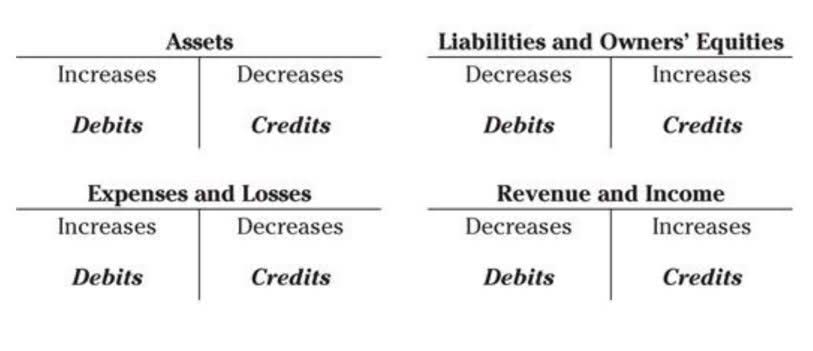
Here are some accounting rules highlights for your chart of accounts – when an employee is on any accrued vacation time policy (per hour worked, each pay period, beginning of year or anniversary date). This means that employees must use their vacation time by a certain date (such as the end of the year), and can only carry forward a small number of hours (if any) into the next year. One issue is that this policy may be illegal, since vacation is an earned benefit that cannot be taken away (which depends on the law in each state). Compensated vacations may refer to paid holidays, paid vacations, and paid sick leave by an employer for its employees.
- Let’s assume that a company has a formal agreement that provides its employees with 120 hours of paid vacation in the year following the employees’ full-time employment.
- When creating a PTO policy, it is critical to consider both the requirements of the company and the employee.
- Alternatively, you can request your payroll service provider to share employee vacation time data for a specific period.
- Part of the rights for employers, in particular, the value of vacation accrual Ontario rights fall under the Employment Standards Act.
- Our punch limiting setting ensures employees can only punch in/out at the start and end of their shift.
- PTO conversion enables employees to convert their unused paid time off into mental and financial wellness, based on their own needs and priorities.
When to record a vacation accrual journal entry
He has been the CFO or controller of both small and medium sized companies and has run small businesses of his own. He has been a manager and an auditor with Deloitte, a big 4 accountancy firm, and holds a degree from Loughborough University. Vacation time is an essential precautionary measure for employers to ensure their employees are healthy and productive. An employer must consider a few points when accounting for compensated benefits. The use of probability largely depends on the professional judgment of the employer. Get up and running with free payroll setup, and enjoy free expert support.
Be prepared for tax season early
Vacation pay is an example of an accrued expense and an accrued liability that is required by the matching principle. When building out the schedule, managers can use our drag and drop functionality to build it quickly. They can also copy the shifts to other days of the week, and, when viewing the calendar, they can filter by employee or location.

Vacation Being Used by Employees
After a stint in equity research, he switched to writing for B2B brands full-time. Arjun has since written for investment firms, consultants, and SaaS brands in the Accounting and Finance space. Chartered accountant Michael Brown is the founder and CEO of Double Entry Bookkeeping. He has worked as an accountant and consultant for more than 25 years and has built financial models for all types of industries.
How to track and manage accrued vacation for employees.

In this case, you might elect to record the accrual monthly or quarterly rather than every pay period. When examining vacation accrual systems, accrued vacation meaning you’ll want one that is customizable for your needs. Buddy Punch allows managers to customize vacation accrual with a range of options.

Instead of getting a “bank” of time off to draw from at the start of the calendar year (or other period determined by the employer), employees earn and accumulate time off based on time worked. Accrued time off is a sort of PTO policy in which employees receive paid time off depending on the number of working hours they have put in. Employees can earn PTO on an hourly, weekly, biweekly, monthly, or per pay period basis. Accrued time off varies from lump sum PTO in that a firm estimates how much time an employee may take off every year based on the number of hours they work.
- Thus, it promotes a healthier work-life balance and maximizes the benefits of time off.
- Hence, it needs to make accrued vacation each week which is equivalent to 4% per week (2/50).
- On an annual basis, the entity’s accounting department reviews the vacation accrual by benchmarking it to prior periods.
- You can always offer your employees more paid vacation time, but never less than the federal law states.
- Semimonthly PTO accrual grants paid time off twice per month, while biweekly accrual grants PTO every two weeks.
- A vacationable earning is any earning paid to employees that can qualify for vacation pay calculated to them.
- This provides flexibility and ensures that workers do not lose their hard-earned leave if they cannot take it within a calendar year.
- This allows them to take time off later rather than being paid overtime wages.
- In order to have vacation accrual, you first must have accurate time tracking in place.
- Primarily, the concept of compensation regardless of work calculated by a percentage of hours/work is the main factor for both.
- IAS 19 provides guidance on the matter of accounting treatment for such benefits.
- Credit Vacation Payable because vacation accrual is considered a liability.
- The most common form of accrued pay is PTO or paid vacation time, which is simply paying regular wages during time spent on leave from work.
- So if the year rolls over and they haven’t taken this time off, they can’t get it back.
- For example, an employee may accrue eight hours of paid time off every two weeks.
- Compensated absence or paid vacations are a common form of accrued benefits.
- The company has to recognize compensation for their services as an asset following IAS 23 Borrowing Costs.
Leave a Reply